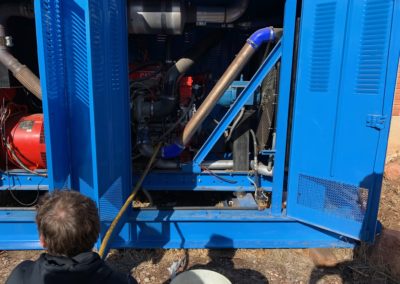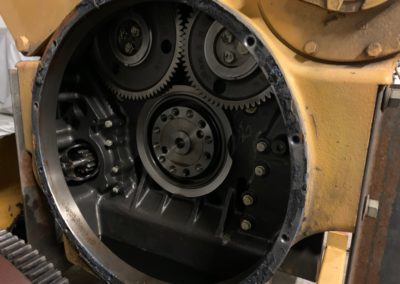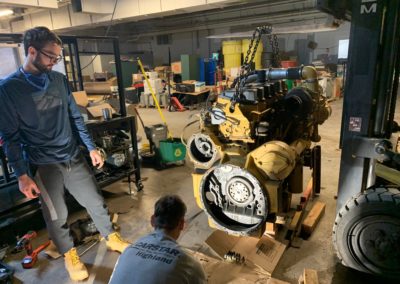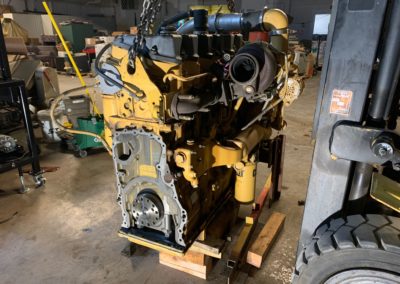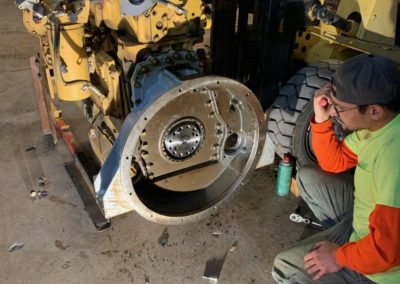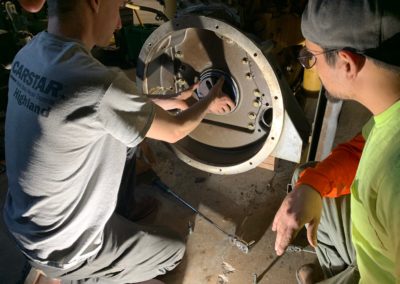Fuel Additives Senior Design
Overview
As part of their sustainability goal to reduce carbon emission by 30%, Newmont Corporation is looking to reduce particulate emissions from their diesel equipment. This is especially important for underground mining since the particulate emissions reduce air quality and require heavy ventilation of the mine tunnels. This project aims to find a cost-effective solution to reducing diesel emissions for Newmont Corporation. The work of a previous team identified diesel fuel additives as a potential solution to this problem, along with biodiesel blends. For this semester, our project team designed and worked on a test procedure for comparing different brands of fuel additives on an actual heavy-duty diesel engine. After comparing several options, the team selected a Caterpillar C15 engine as the best choice for testing, due to its use in the mining industry. Wagner CAT generously donated the engine to the project at no charge. The remainder of the semester was spent preparing for the test, where the engine will be connected to a generator and emissions sampled after running on several different additives. Virtual Energy provided us the use of their facilities and valuable input on the test procedure. As part of the Newmont Corporation Senior Design studio format, we also prepared our project for continuation next semester with execution of the generator tests and a possible field test.

Live Zoom Chat
William L Beasley is inviting you to a scheduled Zoom meeting.
Topic: Newmont Senior Design Fuel Additives- Showcase Meeting
Time: Apr 29, 2021 08:00 AM Mountain Time (US and Canada)
Join from PC, Mac, Linux, iOS or Android: https://mines.zoom.us/j/99797904985
Or iPhone one-tap: 16699006833,99797904985# or 12532158782,99797904985#
Or Telephone:
Dial: +1 669 900 6833 (US Toll) or +1 253 215 8782 (US Toll)
Meeting ID: 997 9790 4985
International numbers available: https://mines.zoom.us/u/adrCOkpDw
Or a H.323/SIP room system:
H.323: 162.255.37.11 (US West) or 162.255.36.11 (US East)
Meeting ID: 997 9790 4985
SIP: 99797904985@zoomcrc.com
Team Members
- Billy Beasley
- Sean Pearce
- Colton Ketterling
- Tony Marquez
The Client
- Ron Miller
- Mike Aire
Acknowledgements
Project Advisor: Dr. Robin Bullock
Technical Advisor: Input from Dr. Gregory Bogin and Dr. Jurgen Brune
Donations Made by: Wagner Cat, Virtual Energy
This is a non-traditional project as part of the Newmont Corporation Design Studio. The team inherited the project from a previous team that graduated in Fall 2020. Over two semesters, the previous team did introductory work on the feasibility of using biodiesel or diesel fuel additives at mine sites to reduce emissions. After sending some fuel additive samples to a lab for testing, they selected 3 fuel additives as candidates for further testing.
The challenge for the team this semester was to determine a method of testing the fuel additives in a more realistic setting. Newmont Corporation desired a full-scale engine test before running any costly fuel additive studies in the field. The first major step was to obtain an engine that could be used for testing. The team compared a number of options shown in the decision matrix below, ranging from small scale single cylinder engines to full scale engines from heavy-duty industrial equipment. In order to best replicate mine equipment, the team chose a Cat C15 diesel engine for the testing. This is a 15.0 liter, heavy-duty engine that is commonly used in semi-trucks, excavators, and other large industrial equipment. Although it would be the most challenging for the team to work on, the results would be the most accurate from the C15. The engine was generously donated to the team by Wagner CAT, a roughly $10,000 value.
With the engine selected, the team focused on conducting testing. In order to test the fuel additives, the team needed to connect the engine to a generator as well as a load cell to dissipate the power. This allows the engine to be run on a load to simulate operating conditions. The team also needed access to an emissions testing bench to sample the emissions and determine the operating impacts of the fuel additives. The team got into contact with Virtual Energy in Colorado Springs, who generously offered the use of their facilities and expertise to help out with the project. The tests involve running fuel lines to separate containers with the 3 fuel additives, a biodiesel blend, and a control sample of ULSD diesel and running the engine to sample the exhaust and determine emissions levels.
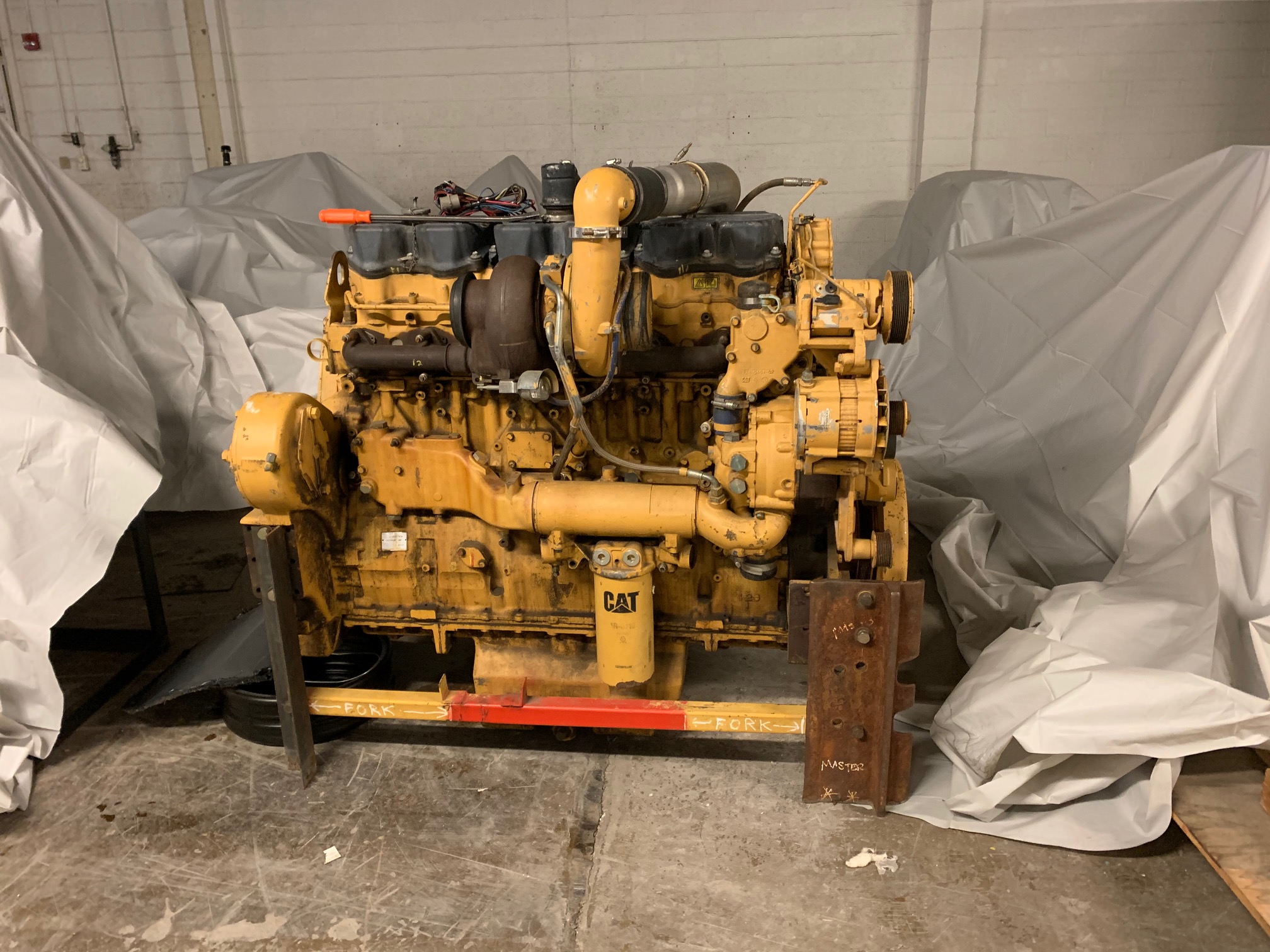
Design Solution
The first step to implementing the design and testing process was to obtain the engine from Wagner Cat and transport down to Virtual Energy in Colorado Springs. Next, the team had to modify the existing generator configuration to fit the C15 engine. The generator was previously attached to a 15 Liter Cummins engine modified to run on natural gas. The team drained the coolant from the engine, removed the exhaust plumbing, and removed the roof and side panels of the genset to allow room for the engine to be removed. After unbolting the flywheel housing from the generator mounts and the flex plate from the flywheel, the Cummins engine was removed and placed into storage at Virtual Energy.
The C15 engine we obtained came out of an excavator, so it had a unique wet flywheel housing design. To further explain, the flywheel housing has engine oil inside of it during normal operation to provide lubrication for several PTO gears. This would in turn leak oil all over the generator if installed, therefore the team had to purchase a new dry flywheel housing from Wagner Cat. To install this flywheel housing, the team first had to remove the previous housing, all attached PTO gears, and the starter motor. A new rear main seal and wear sleeve was also installed, which keeps the oil out of the flywheel housing for this design. The new flywheel housing was bolted on and the flywheel attached back on.
The design of the fuel transfer system allows the team to switch between fuels while the engine is running so the engine stays at operating temperature and the tests can be done quickly. There will be drums of ULSD diesel, biodiesel, and each additive at the correct dosing rate. A fork-shaped fuel line will go into two of the drums, with one on the control at all times and the drums arranged in a circular arrangement around the control. An electric pump would then lift the fuel to the pump on the C15 engine. The team will get the engine warm on the control diesel, take an emission sample on the control, then take emissions samples for each of the additives and biodiesel. In between each test drum, the team will briefly switch to the control to flush out all of the fuel from the lines and ensure there is no cross contamination. Simultaneously, the team is also working on a value proposition with an economic analysis to compare fuel additives with other solutions for particulate emissions reduction, such as switching to all-electric equipment or using Tier IV standard diesel engines.
Next Steps
Delays in obtaining parts and getting the correct backspacing for the flywheel and flex plate mean that the team has not finished the fuel additive testing, however, the team is still working to finish the tests this semester if at all possible. After the testing is complete, the team will disassemble the testing setup and transport the engine back to campus for use by future students in automotive courses. Next semester’s team will analyze the results of the testing and present a recommended solution to Newmont Corporation for full scale implementation of a fuel additive program at their mine sites. The team created a structure for field test procedures to test additives at a Newmont mine site over the summer; next semester the team will study these results.
Meet the Team
Billy Beasley
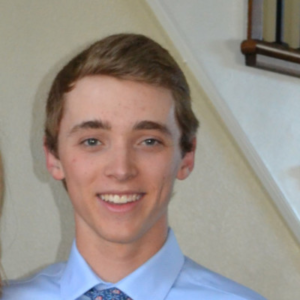 My name is Billy Beasley and I was a support member on the team last semester as well. My work experience has been mostly in the ski lift industry; I spent two summers as a Lift Maintenance Assistant at Vail Mountain and most recently worked for a start-up called Pyxis AI. I served as the Team Lead this semester and enjoyed improving my leadership skills while learning more about heavy duty diesel engines. After graduation, I will be working in the ski lift industry in Utah.
My name is Billy Beasley and I was a support member on the team last semester as well. My work experience has been mostly in the ski lift industry; I spent two summers as a Lift Maintenance Assistant at Vail Mountain and most recently worked for a start-up called Pyxis AI. I served as the Team Lead this semester and enjoyed improving my leadership skills while learning more about heavy duty diesel engines. After graduation, I will be working in the ski lift industry in Utah.
Sean Pearce
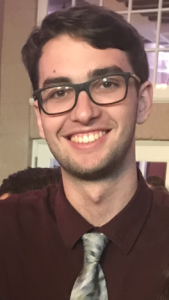 Hi, my name is Sean Pearce and I was a support member for the previous semester’s team. I have worked on engines a decent bit and also have taken the Introduction to Internal Combustion Engines class. In that class, I had taken apart a couple of engines and also ran some emissions testing while varying the mixture of fuels. This also included measuring various efficiencies of an engine as well as the power output.
Hi, my name is Sean Pearce and I was a support member for the previous semester’s team. I have worked on engines a decent bit and also have taken the Introduction to Internal Combustion Engines class. In that class, I had taken apart a couple of engines and also ran some emissions testing while varying the mixture of fuels. This also included measuring various efficiencies of an engine as well as the power output.
Colton Ketterling
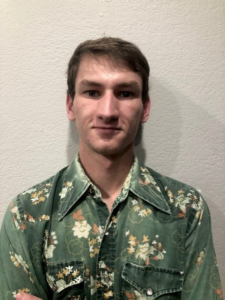 Hi, I’m Colton. I have roughly 5 years of hands-on experience servicing and repairing diesel engines and equipment from oil changes to torque-to-yield head bolts. I worked at a tree company as a fleet technician where I was able to work on various machines such as front end loaders, skid steers, bucket trucks, log chippers, stump grinders, chainsaws, diaphragm pumps, and other machines that may be involved in tree trimming and removal. I am passionate about engines and machines.
Hi, I’m Colton. I have roughly 5 years of hands-on experience servicing and repairing diesel engines and equipment from oil changes to torque-to-yield head bolts. I worked at a tree company as a fleet technician where I was able to work on various machines such as front end loaders, skid steers, bucket trucks, log chippers, stump grinders, chainsaws, diaphragm pumps, and other machines that may be involved in tree trimming and removal. I am passionate about engines and machines.
Tony Marquez
 My name is Antonio Marquez but I usually like to go by Tony. I am currently a senior studying Mechanical Engineering and will be graduating in December. My previous internships have been in the Construction Industry with Brannan Sand & Gravel and Flatiron Construction. I was a QA intern for Brannan but later became a Field Engineer intern with Flatiron. Currently I work for the Aerospace Industry since my internship last summer turned into a part time job. I am also currently taking the Internal Combustion Engines course, which proved helpful for this project.
My name is Antonio Marquez but I usually like to go by Tony. I am currently a senior studying Mechanical Engineering and will be graduating in December. My previous internships have been in the Construction Industry with Brannan Sand & Gravel and Flatiron Construction. I was a QA intern for Brannan but later became a Field Engineer intern with Flatiron. Currently I work for the Aerospace Industry since my internship last summer turned into a part time job. I am also currently taking the Internal Combustion Engines course, which proved helpful for this project.

